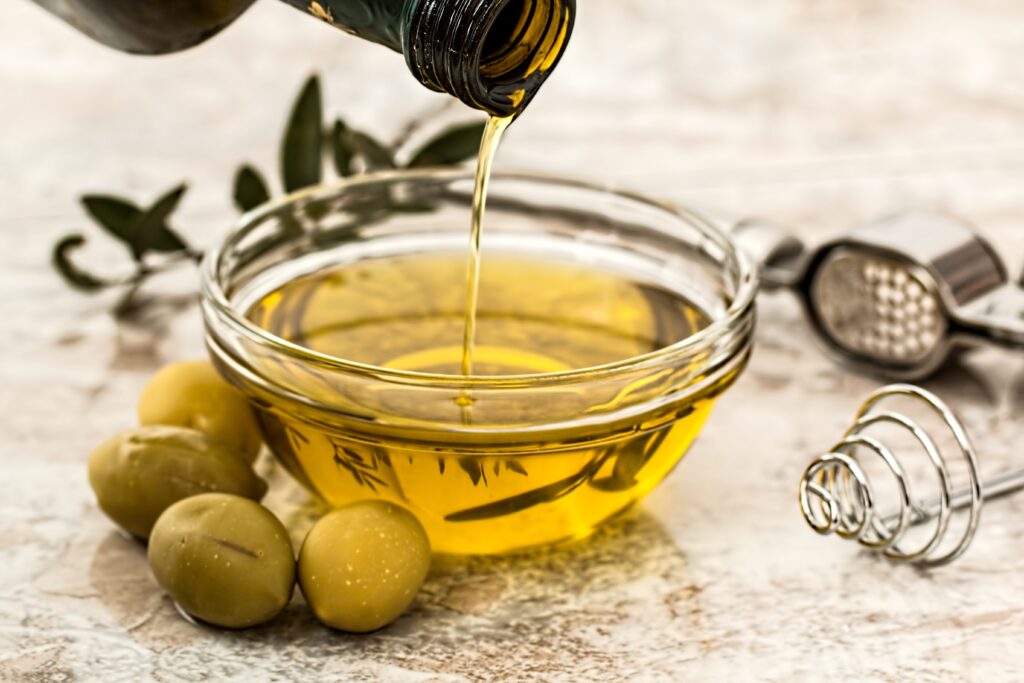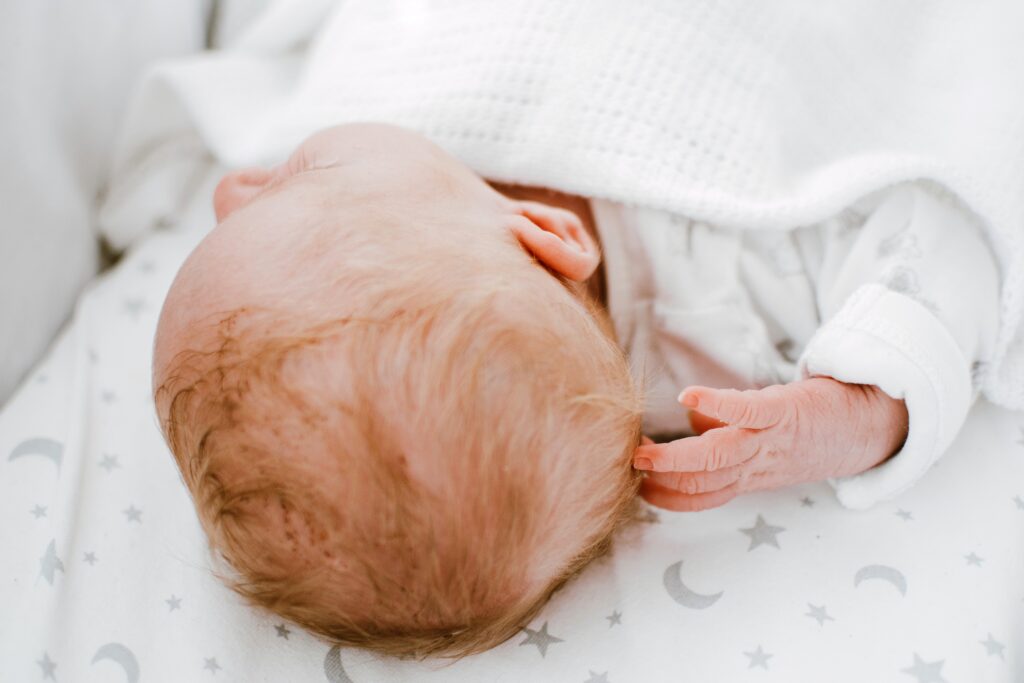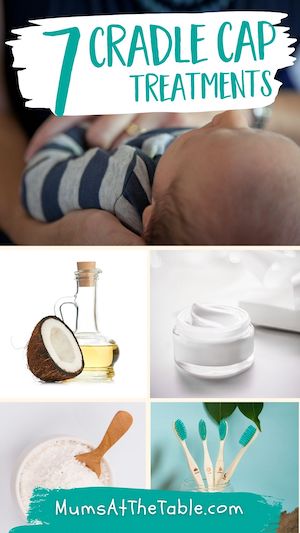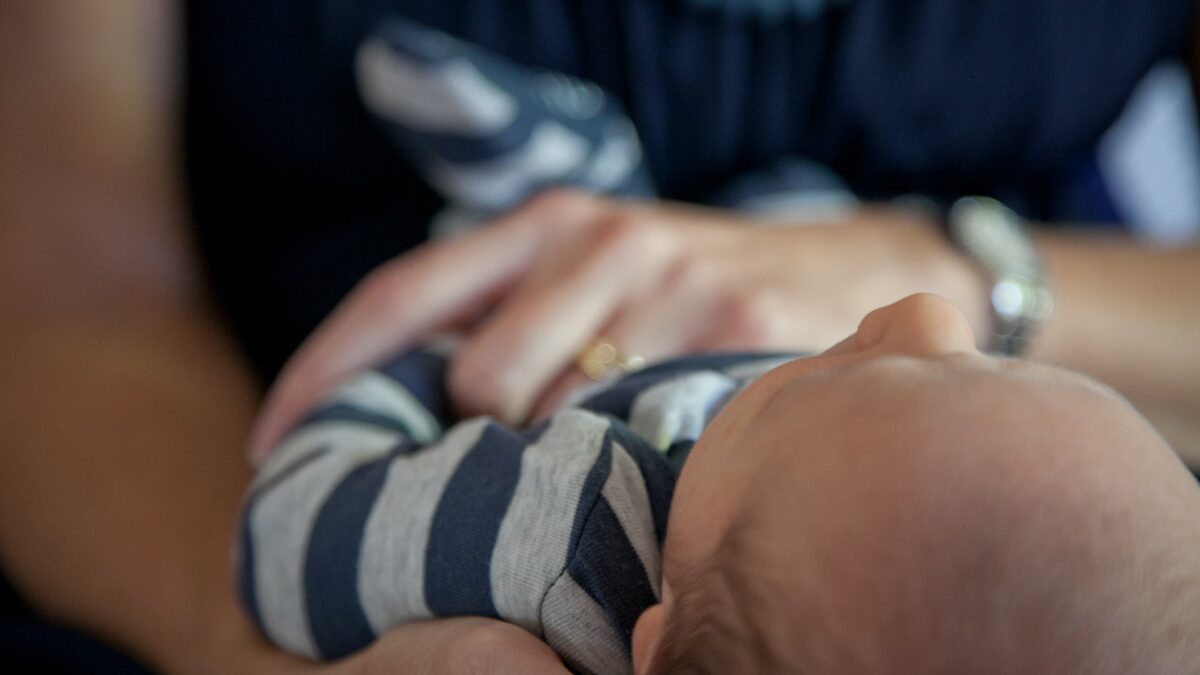Cradle cap can make your baby’s hair look like it has dandruff. Here are 7 cradle cap treatments to clear up your baby’s scalp.
Cradle cap is a form of seborrhoeic dermatitis and is a common skin condition that affects many young babies. While most often appearing on a baby’s head, the condition can also make your baby’s skin look red or inflamed.
What is cradle cap caused by
We don’t know the exact cause of cradle cap, but it is generally believed to be a skin inflammation reacting to sebum (which oils the skin). Sebaceous glands in the scalp generate sebum. Too much sebum can cause some babies to form yellow crusts or scaly patches on their head.
While it may make a child look like they haven’t been well looked after or badly in need of a wash, those flakes on baby’s head is not a sign of poor hygiene.
Cradle cap is not contagious and in most cases, will get better on its own after a few weeks. It may also return after treatment, but should stop completely by the time your child is 12 months old.
Dr Simone Kooke shares about how to live with having a skin condition.
7 cradle cap treatments
While cradle cap doesn’t harm or annoy your baby, the yellow scales are unsightly and can sometimes hang around for months. How to get rid of cradle cap is a common question many mums ask in our Facebook group, and our members are full of helpful and effective suggestions.
Here are 7 highly recommended ways to get rid of cradle cap.
1. Use a natural or mineral oil

Mineral oils like baby oil used to be the product of choice, but today, most mums opt for natural ones such as coconut or olive oil.
It sounds counterintuitive to be putting extra oil on your baby’s head when the problem is caused by your baby’s overactive oil glands. However, rubbing oil into your baby’s scalp and leaving it in for about 30 minutes can help to soften all the scaly bits.
Then, simply use a soft brush, toothbrush or face cloth to gently loosen and remove the crusts. Or use a mild baby shampoo to wash off when giving baby a bath.
The flakes may not fall off straightaway, but will do over time. Be sure not to force the crusts off as it may cause your baby’s skin to bleed.
2. Apply fresh breastmilk
If you’re still breastfeeding, many mums from our Facebook group recommend massaging some fresh breastmilk on the affected areas of your baby’s scalp.
As with the oil treatment, brush lightly after 30 minutes to remove crusts or wash off gently.
3. Moisturise
Moisturisers are great for your baby’s skin and can help loosen and soften any crusts. MooGoo Scalp Cream is hugely popular and often recommended by the mums in our group. For many, its effects could be seen almost immediately.
Other recommended moisturising products include Dermeze Treatment Ointment, sorbolene and Mustela Cradle Cap Cream.
4. Make a bicarb paste
Many mums also swear by a paste of equal parts water and sodium bicarbonate. Rub on your baby’s head, wait for it to dry and rinse off during bath time.
Read: How to settle a newborn
5. Toothbrushes aren’t just for teeth
Everyday, gently brush your baby’s head with a super soft toothbrush. It won’t be long before their scalp clears.
6. Wait it out
While it’s unsightly and looks uncomfortable, cradle cap will naturally go away after some time. It shouldn’t itch or hurt, but if it does, it may be time to have a chat with a GP.
7. Seek medical help
If your baby’s cradle cap looks particularly inflamed or if you are concerned for any reason, make an appointment to see a doctor.
Warnings about cradle cap

A newborn’s skin is very delicate so if you can, avoid giving them a bath every day. When you do give your baby a bath, use only water, bath oils, soap-free wash and specially formulated baby shampoo.
Over-the-counter cradle cap shampoos should be used with caution and even diluted when required.
Whatever you do, don’t pick at the flakes as it may cause your baby’s skin to break and introduce bacteria and infections.

How helpful was this article?
Click on a star to rate it!
5 / 5. 1
Be the first to rate this post!
Melody Tan
Related posts
Subscribe
Receive personalised articles from experts and wellness inspiration weekly!


